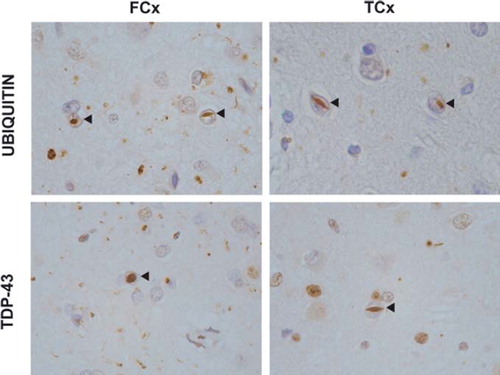Figures & data
Table I. Diagnostic categories of the FTLD-ALS disease spectrum.
Table II. Genes associated with FTLD and ALS.
Table III. Characteristics of chromosome 9p-linked FTLD-ALS families.


